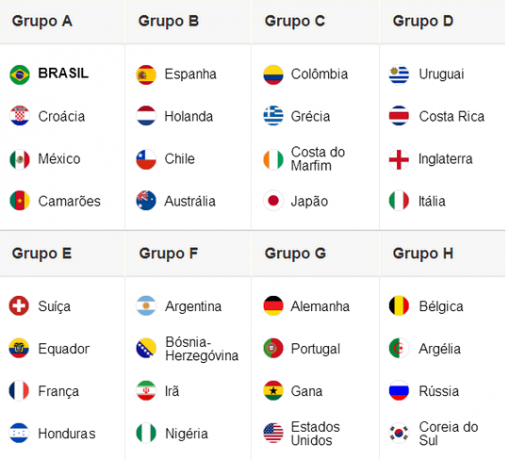The Soccer World Cup returned to Brazil after 64 years. The first World Cup played on Brazilian soil took place in 1950, when our team was defeated in the final by Uruguay in the crowded Maracanã, an episode that became known as “Maracanazo”. In 2014 Brazil had the chance to scare away this ghost, but ended up suffering again a remarkable defeat at home, losing 7-1 to the Germany, who later became champion.
The selection of countries that competed in the 2014 World Cup began in 2011 with the continental qualifiers. Each continent has a specific amount of seats for the World Cup, as distributed below: Europe (9 direct places + 8 for recaps), South America (4 + 1), Asia (4 + 1), Africa (5) and Oceania (1 place for recap). The host country has a guaranteed place.
The countries classified for the repechage played in round-trip matches, with the eight teams from Europe facing each other in four games, the fifth from South America faced the fifth from Asia and the 4th from North and Central America played the spot with the champion of Oceania. These clashes were defined by drawing lots.
Classified
Africa: Algeria, Cameroon, Côte d'Ivoire, Ghana and Nigeria;
North America: Costa Rica, United States, Honduras and Mexico (recap);
South America: Argentina, Chile, Colombia, Ecuador and Uruguay (recap);
Asia: Australia¹, South Korea, Iran, Japan and Jordan (recap);
Europe: Germany, Belgium, Bosnia, Croatia (recap), Spain, France (recap), Greece (recap), Netherlands, England, Iceland (recap), Italy, Portugal (recap), Romania (recap), Russia, Sweden (recap), Switzerland and Ukraine (recap).
Recap
Sweden vs Portugal – won Portugal
France vs Ukraine – beat France
Romania vs Greece – won Greece
Croatia vs Iceland – won Croatia
Uruguay vs Jordan – won Uruguay
Mexico vs New Zealand – beat Mexico
The repechage winners joined the direct classifieds and the host country, totaling 32 selections. In December 2013, a draw defined the eight groups for the 2014 World Cup, with each group containing a seed (home country and the top-ranked teams in the FIFA rankings). In the case of the 2014 World Cup, the ranking of October 2013 was used: Spain (1st), Germany (2nd), Argentina (3rd), Colombia (4th), Belgium (5th), Uruguay (6th), Switzerland (7th) and Brazil (host country).

The opening game of the 2014 World Cup took place on June 12, in São Paulo, when Brazil beat Croatia. Until June 26, the group stage matches were played, with each of the 32 teams playing three games. The top two teams from each group advanced to the round of 16, played between June 28th and July 1st. The quarter finals were held on the 4th and 5th of July, and the semifinals on the following 8th and 9th. The final took place on July 13, in Rio de Janeiro, with Germany and Argentina.
Altogether there were 64 games in 12 Brazilian citiesAttractions: Belo Horizonte, Brasília, Cuiabá, Curitiba, Fortaleza, Manaus, Natal, Porto Alegre, Recife, Rio de Janeiro, Salvador and São Paulo. The cities of Brasília and Rio de Janeiro had the highest number of games: seven each.
by Adriano Lesme
Graduated in Journalism
Source: Brazil School - https://brasilescola.uol.com.br/educacao-fisica/copa-mundo-futebol-2014.htm

